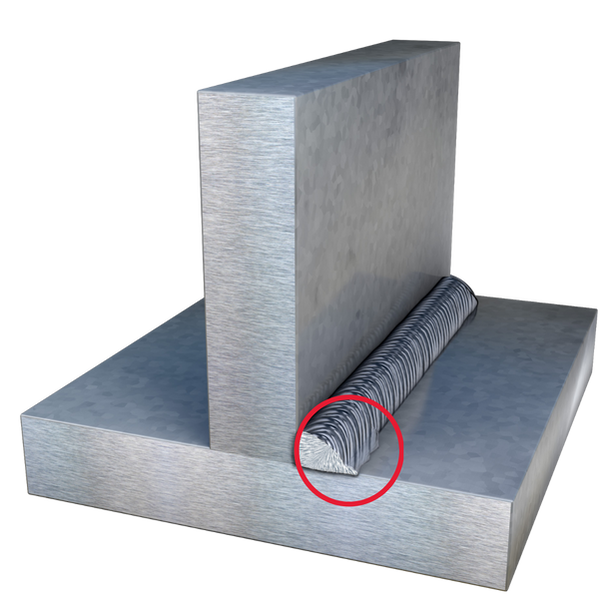Preventing Weld Undercut Demystified: Methods for Success
Preventing Weld Undercut Demystified: Methods for Success
Blog Article
Grasping the Art of Welding: Just How to Avoid Undercut Welding Issues for Flawless Construction Outcomes
By understanding the root causes of undercut welding and carrying out reliable methods to prevent it, welders can elevate their craft to new levels of excellence. In the search of flawless fabrication results, grasping the art of welding to prevent undercut problems is not just a skill yet a requirement for those aiming for perfection in their work.
Comprehending Undercut Welding

To avoid undercut welding, welders ought to make sure appropriate welding criteria, such as readjusting the current, voltage, travel speed, and maintaining the correct electrode angle. By understanding the causes of undercut welding and carrying out preventative procedures, welders can attain high-grade, structurally audio welds.
Sources Of Undercut in Welding
Understanding the factors that add to damage in welding is essential for welders to generate high-quality, structurally sound welds. When the weld steel does not appropriately load the groove formed between the base steel and the formerly deposited weld metal, damaging takes place. Several elements can lead to undercut in welding. One usual cause is excessive warmth input. Welding at heats for extensive periods can result in the base metal thawing even more than preferred, resulting in undercut. Insufficient welding wrong or current welding rate can also contribute to undercut. Inadequate current might not offer sufficient warm to thaw the base and filler metals adequately, while too much rate can stop correct blend, triggering undercut. In addition, improper electrode angles or incorrect lantern adjustment methods can produce areas of reduced weld metal deposition, promoting undercut. Comprehending these causes and implementing correct welding methods can aid avoid damaging problems, making sure resilient and strong welds.
Methods to avoid Undercutting

To reduce the threat of undercutting in welding, welders can employ strategic welding techniques targeted at enhancing the high quality and stability of the weld joints. One effective technique is to change the welding criteria, such as voltage, current, and travel speed, to ensure appropriate heat input and deposition. Preserving an ideal electrode angle and making certain consistent travel speed can additionally aid protect against undercut. In addition, using the appropriate welding method for the certain joint configuration, such as weave or stringer beads, can add to lowering undercutting. Preventing weld undercut.
Using back-step welding methods and regulating the weld bead account can also go to the website help distribute warmth equally and decrease the threat of undercut. Normal assessment of the weld joint throughout and after welding, as well as applying high quality guarantee measures, can aid in spotting and dealing with undercutting problems without delay.
Relevance of Proper Welding Specifications
Selecting and preserving appropriate welding criteria is important for achieving effective welds with marginal defects. Welding specifications describe variables such as voltage, present, take a trip rate, electrode angle, and protecting gas circulation rate that directly influence the welding procedure. These criteria have to be meticulously changed based on the kind of material being bonded, its density, and the welding method utilized.
Appropriate welding parameters guarantee the correct amount of warm is used to melt his comment is here the base metals and filler material evenly. If the criteria are set too expensive, it can lead to extreme warmth input, triggering spatter, burn-through, or distortion. On the various other hand, if the criteria are as well reduced, insufficient fusion, absence of infiltration, or undercutting may happen.
Quality Control in Welding Operations

Conclusion
To conclude, understanding the art of welding needs a detailed understanding of undercut welding, its causes, and techniques to avoid it. By ensuring correct welding specifications and implementing quality check my source control practices, remarkable construction outcomes can be attained. It is necessary for welders to regularly pursue quality in their welding operations to prevent undercut problems and produce high-grade welds.
Undercut welding, a typical defect in welding procedures, occurs when the weld metal does not correctly load the groove and leaves a groove or anxiety along the bonded joint.To stop undercut welding, welders should make sure proper welding specifications, such as adjusting the present, voltage, traveling speed, and preserving the proper electrode angle. Inadequate welding inaccurate or current welding speed can additionally contribute to undercut.To alleviate the threat of undercutting in welding, welders can utilize critical welding techniques aimed at boosting the quality and stability of the weld joints.In final thought, understanding the art of welding requires a complete understanding of undercut welding, its reasons, and techniques to prevent it.
Report this page